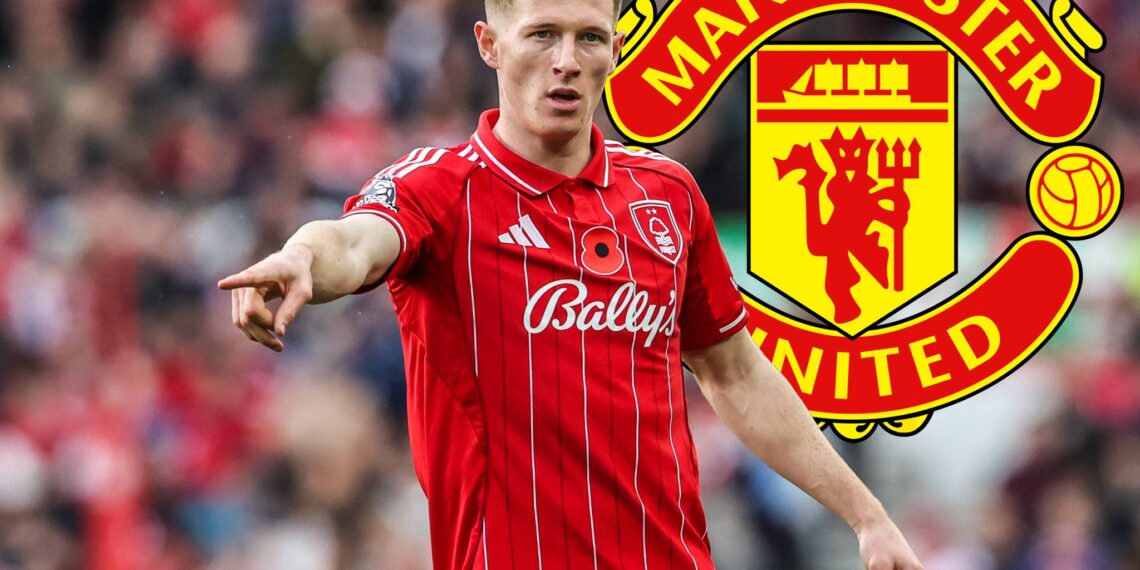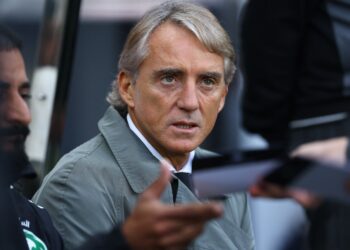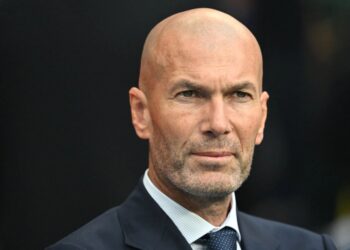Manchester United have formally registered concrete interest in Nottingham Forest midfielder Elliot Anderson, with the club making their intentions clear to the Tricky Trees regarding the 23-year-old England international. Transfer journalist Florian Plettenberg reports that Forest are demanding a fee between £100-120 million for their star midfielder—more than triple the £35 million they paid Newcastle United just 18 months ago. Manager Ruben Amorim has personally identified Anderson as the ideal profile to transform United’s midfield, viewing his box-to-box energy, progressive passing, and Premier League experience as essential components for his tactical system at Old Trafford.
Table of Contents
From Newcastle Graduate to Premier League Standout
Elliot Anderson joined Nottingham Forest from Newcastle United in July 2024 for a reported fee of £35 million, signing a five-year contract that keeps him at the City Ground until 2029. What many observers initially dismissed as a financial necessity driven by Profit and Sustainability Rules has transformed into one of the summer’s most astute signings, with Anderson establishing himself as one of the Premier League’s most impressive midfielders.
Anderson’s Career Profile
| Player Information | Details |
|---|---|
| Full Name | Elliot Junior Anderson |
| Age | 23 years old (Born: November 6, 2002) |
| Position | Central Midfielder |
| Current Club | Nottingham Forest |
| Contract Expiry | June 30, 2029 |
| Previous Club | Newcastle United |
| Transfer Fee (2024) | £35 million |
| Nationality | England |
The 23-year-old has blossomed into a genuine all-around midfielder during his time at the City Ground, earning recognition from England manager Thomas Tuchel who made him a centerpiece of the national team setup. His meteoric rise from Newcastle academy product to England international represents one of the Premier League’s most compelling success stories this season. Anderson’s performances have been characterized by relentless work rate, technical excellence, and a maturity that belies his relatively young age.

His journey through Newcastle’s academy system laid the foundation for his current success. Joining the Magpies at age eight after a stint at Wallsend Boys Club, Anderson progressed through every youth level before making his first-team debut in January 2021. Despite showing promise at Newcastle, limited opportunities under various managers meant a move became inevitable. Forest’s £35 million investment has proven inspired, with Anderson immediately justifying the fee through consistent performances that have attracted attention from England’s biggest clubs.
Why Man United Want Anderson
Anderson ranks in the 99th percentile among Premier League midfielders for progressive passes and touches, indicating his comfort as a high-volume player who can dominate possession and drive his team forward. This statistical dominance demonstrates exactly why Amorim sees the young midfielder as an ideal fit for his tactical system at Old Trafford, where United have struggled to find midfielders capable of controlling games while maintaining defensive discipline.
The Manchester United manager requires players capable of operating in multiple phases of play—pressing aggressively, transitioning quickly, and contributing both defensively and offensively. Anderson is both a physical, tenacious tackler who can set an imperious tone in the center for his team and someone who can retain and pass the ball cleanly. These dual qualities make him exceptionally valuable in modern football, where the traditional distinction between defensive and attacking midfielders has become increasingly blurred.
Beyond his technical abilities, Anderson has developed into a genuine goal threat from midfield. He’s developed his set-piece threat, taking the lion’s share of corners for Forest and demonstrating the kind of tactical intelligence that marks elite midfielders. This versatility addresses multiple needs within United’s squad, providing both creativity and defensive solidity that has been lacking this season. His ability to arrive in the box at opportune moments, combined with his set-piece delivery, adds dimensions that would significantly enhance United’s attacking options.
Anderson’s 2024-25 Premier League Performance
| Statistic | Performance |
|---|---|
| Appearances | 14+ matches |
| Goals | 2 |
| Assists | 6 |
| Progressive Passes | 99th percentile |
| Progressive Touches | 99th percentile |
| Tackles Won | High volume |
| Set-Piece Responsibilities | Primary corner taker |
Anderson’s statistical profile reveals a midfielder operating at elite levels across multiple metrics. His progressive passing numbers place him among the Premier League’s best at advancing the ball through midfield, while his defensive contributions demonstrate the all-action style that modern football demands. The combination of two goals and six assists in limited appearances suggests his output will only improve with more playing time and better teammates around him.
The Price Tag Debate: Understanding Forest’s Valuation
While Forest’s £100-120 million valuation initially appears astronomical, transfer insiders suggest the actual figure may be considerably lower. Journalist Ben Jacobs stated that Anderson could be available for a fee significantly less than the reported £100 million valuation, comparing the situation to Alexis Mac Allister’s move from Brighton to Liverpool, where initial reports of £60-80 million ultimately resulted in a £35 million transfer.
Jacobs explained that Anderson’s contract situation is quite complicated and expressed shock if anyone needed to pay £100 million to secure his services from Nottingham Forest. This suggests that while Forest have publicly set a high asking price to deter suitors, negotiations could realistically settle around the £60-70 million mark—still substantial profit on their £35 million investment but far more reasonable than the initial demands suggest.
The negotiating dynamics favor clubs willing to wait until summer rather than forcing through a January deal. Forest, currently competing for European qualification and enjoying their best Premier League season in decades, have little incentive to sell mid-season regardless of price. However, come summer, if Anderson expresses desire to move and a suitable offer arrives, Forest’s negotiating position weakens considerably. The £100-120 million figure represents Forest’s public stance designed to discourage January approaches rather than a realistic expectation of what Anderson would actually cost.
Transfer market analysts suggest a fee between £60-75 million represents fair value given Anderson’s age, contract length, proven Premier League quality, and England recognition. This places him in a similar bracket to recent midfield transfers like Moises Caicedo’s Chelsea move, though Anderson’s longer contract and Forest’s lack of financial pressure strengthen their negotiating position relative to Brighton’s situation with Caicedo.
England Recognition Validates Elite Status
Anderson received his first England U21 call-up in August 2024 for UEFA Euro U21 qualifying fixtures, scoring his first goal for the young Lions in a 7-0 victory over Azerbaijan. His performances throughout the tournament were exceptional, culminating in England’s European Championship victory and establishing Anderson as one of Europe’s most promising young midfielders.

Anderson was included in England’s squad for the 2025 UEFA European Under-21 Championship, where he scored the last goal in their quarter-final victory over Spain and started in the final as England defeated Germany after extra time to lift the trophy. His contributions earned him selection to UEFA’s team of the tournament, cementing his status as one of Europe’s brightest young midfielders and attracting the attention of elite clubs across the continent.
International Career Highlights
| International Career Highlights | Achievement |
|---|---|
| England U21 Debut | August 2024 |
| First U21 Goal | vs Azerbaijan (7-0 win) |
| EURO U21 Performance | Winner 2025 |
| Tournament Goal | Quarter-final vs Spain |
| Final Appearance | Started vs Germany |
| Individual Honor | UEFA Team of Tournament |
The international recognition validates what Forest supporters have witnessed all season—Anderson operating at levels that transcend club football and suggest genuine world-class potential. His performances under tournament pressure, particularly in the knockout stages against elite European nations, demonstrated the mental fortitude and tactical intelligence required to succeed at the highest levels. These qualities make him particularly attractive to clubs competing in the Champions League and seeking players capable of delivering in high-pressure knockout scenarios.
Amorim’s Tactical Vision: Where Anderson Fits
The key attributes Anderson could bring to United’s midfield are his relentless pressing, sharp link-up play, and tireless box-to-box energy, with the ability to drive into space while providing tactical flexibility. Under Amorim’s preferred 3-4-3 system, Anderson would operate as a dynamic number eight, combining with Manuel Ugarte’s defensive anchor role and Bruno Fernandes’ advanced playmaking position to create a balanced and complementary midfield trio.
This midfield structure mirrors what Amorim successfully implemented at Sporting CP, where balance and complementary skill sets proved crucial to dominating domestic competition and competing in European tournaments. Anderson’s capacity to contribute across all phases makes him the missing piece in United’s midfield puzzle, providing the transitional quality and defensive solidity that has been conspicuously absent from their play this season.
In positional terms, Anderson would function as a high-energy number eight who presses aggressively, wins possession in dangerous areas, and drives forward with the ball when opportunities present themselves. This contrasts with Ugarte’s deep-lying role protecting the defense and Fernandes’ license to operate between the lines as a creative force. The three-man midfield would offer the kind of balance United have lacked, with each player possessing distinct responsibilities that complement rather than overlap.
Amorim’s system demands midfielders capable of covering vast distances, maintaining tactical discipline, and making intelligent decisions under pressure. Anderson’s statistical profile suggests he possesses all these qualities, with his progressive passing numbers indicating comfort under pressure and his defensive metrics demonstrating willingness to do the unglamorous work required in a functional midfield. The tactical fit appears natural, which explains why Amorim has personally identified Anderson as a priority target.
Competition for Signature: United’s Rivals Circle
Man United aren’t alone in monitoring Anderson’s situation. Chelsea and Manchester City have both expressed interest in the midfielder, while Newcastle United reportedly harbor hopes of re-signing their academy graduate under improved contract terms. This competition could drive the eventual transfer fee upward, though Forest’s willingness to negotiate remains uncertain given their strong league position and European ambitions that require retaining their best players.
Chelsea’s interest reflects their continued midfield rebuild under their current ownership, with Anderson fitting the profile of young, Premier League-proven talent they’ve targeted aggressively in recent windows. Manchester City view Anderson as potential succession planning for aging midfielders, with his profile matching the technical excellence and tactical intelligence that define City’s recruiting strategy. Newcastle’s interest carries emotional weight given Anderson’s academy origins, though their financial constraints following heavy recent spending may limit their ability to compete with wealthier rivals.
The January transfer window presents complications, as Forest will be reluctant to weaken their squad mid-season while competing on multiple fronts. A summer move appears more realistic, giving all parties time to structure an agreement that satisfies Forest’s valuation while meeting United’s budgetary constraints. This timeline also allows United to offload current midfielders and create space in their wage structure, with Casemiro’s contract expiring in 2026 potentially opening significant financial resources.
What “Concrete Interest” Actually Means: Understanding the Transfer Process
The phrase “concrete interest” in transfer terminology signifies a progression beyond casual monitoring toward active pursuit. It suggests Manchester United have communicated directly with Nottingham Forest, expressing formal interest and potentially opening preliminary discussions about valuation, payment structure, and timing. This represents a significant escalation from the “monitoring” or “interested” language that characterizes early-stage transfer speculation.
However, concrete interest does not guarantee a deal materializes. Forest’s £100-120 million asking price may prove prohibitive, particularly for a January transfer when United’s budget remains constrained by Financial Fair Play considerations and their summer spending. The gap between United’s likely maximum offer—probably around £60-70 million—and Forest’s public demands creates substantial negotiating space that may prove impossible to bridge mid-season.
The most probable scenario involves United maintaining their interest through the season while laying groundwork for a summer approach when conditions become more favorable. Anderson’s contract length until 2029 means Forest face no immediate pressure to sell, allowing them to hold firm on valuation until a club meets their price or Anderson himself pushes for a move. The concrete interest registered now positions United favorably for summer negotiations while signaling to Anderson that elite clubs view him as a priority target.
The Challenge of Premier League Proven Quality
One advantage Anderson possesses over alternative targets is his Premier League pedigree. Unlike foreign imports who require adaptation periods and carry inherent risk regarding their ability to handle English football’s physicality and pace, Anderson has already proven he can thrive in the world’s most competitive domestic league. This reduces risk significantly for United, who have experienced mixed results with overseas midfield recruits in recent years.
His performances against top-six opposition have been particularly impressive, with Anderson rising to the challenge when facing superior individual talent. This suggests the mental strength and technical quality required to succeed at an elite club, where every match carries enormous pressure and scrutiny. The step from Nottingham Forest to Manchester United represents a significant jump in expectations and media attention, but Anderson’s performances in high-pressure international tournaments suggest he possesses the character to handle it.

The Premier League proven element also matters for immediate impact. United cannot afford another transition season where new signings require months to adapt before contributing meaningfully. Anderson could slot directly into Amorim’s system and contribute immediately, providing the kind of instant impact that justifies the substantial transfer fee Forest will demand. This immediacy carries particular value given United’s current position and the urgency surrounding their qualification for next season’s Champions League.
Read More: Endrick Faces Crossroads as Carlo Ancelotti Hints at Transfer to Secure 2026 World Cup Dream
FAQs
How much did Nottingham Forest pay for Elliot Anderson?
Nottingham Forest signed Elliot Anderson from Newcastle United in July 2024 for £35 million on a five-year contract. The move was initially viewed as a financial necessity for Newcastle but has proven to be exceptional business for Forest as Anderson has developed into one of the Premier League’s standout midfielders.
What position does Elliot Anderson play?
Anderson operates primarily as a central midfielder but possesses the versatility to function as a box-to-box number eight or defensive midfielder. His ability to contribute both offensively and defensively makes him valuable across multiple midfield roles, fitting perfectly into modern tactical systems that demand versatility from central players.
Has Elliot Anderson played for England’s senior team?
Anderson currently represents England at the U21 level, where he was instrumental in their 2025 European Championship victory. His impressive performances, including starting in the final and being named to UEFA’s team of the tournament, have positioned him as a strong candidate for future senior team call-ups under manager Thomas Tuchel.
Why is Manchester United interested in Elliot Anderson?
Man United view Anderson as the perfect fit for Ruben Amorim’s tactical system, needing a midfielder who combines pressing intensity, technical quality, and box-to-box energy. His statistical performance in the 99th percentile for progressive actions makes him exceptionally attractive, while his Premier League experience reduces the risk typically associated with major midfield signings.
When could Elliot Anderson move to Manchester United?
While Man United have registered concrete interest, a January transfer appears unlikely given Forest’s competitive ambitions and unwillingness to weaken their squad mid-season. Summer 2025 represents a more realistic timeframe, allowing proper negotiations and enabling Forest to identify suitable replacements while giving United time to structure their finances appropriately.








